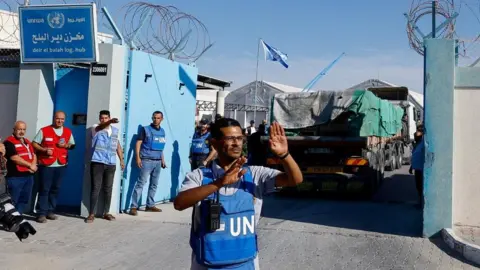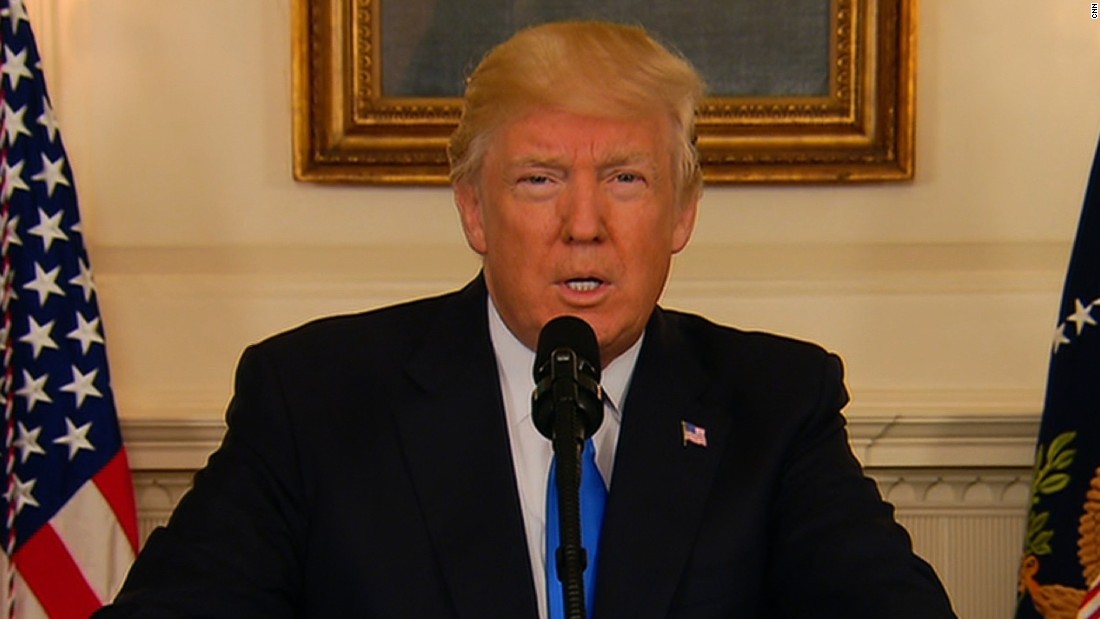Gaza Crisis: International Pressure Mounts On Israel To End Aid Blockade

Table of Contents
The Humanitarian Catastrophe in Gaza
The Gaza aid blockade has created a humanitarian catastrophe, leaving the population facing severe shortages of essential resources and struggling to survive. The scale of suffering is immense, demanding urgent international intervention.
Food and Water Shortages
Food insecurity is rampant in Gaza. Years of blockade have crippled the local agricultural sector and severely limited access to imported goods. The World Food Programme (WFP) reports alarming statistics: over 50% of the population is food insecure, and a significant portion faces severe hunger.
- Examples of food shortages: Regular shortages of basic staples like flour, sugar, and cooking oil. Limited access to fresh produce due to restricted agricultural activity.
- Water contamination issues: The water supply is frequently contaminated, leading to widespread waterborne diseases, particularly among children. Limited access to clean and safe drinking water.
- Lack of access to sanitation: Overcrowding and inadequate sanitation infrastructure contribute to the spread of disease and exacerbate the already dire health situation.
Healthcare Crisis
The Gaza healthcare system is on the verge of collapse. The blockade has severely restricted the import of essential medical supplies, equipment, and medicines. A shortage of qualified medical personnel further compounds the crisis.
- Examples of shortages of essential medicines: Chronic shortages of life-saving medications for diseases like cancer, diabetes, and heart conditions. Lack of access to specialized treatments.
- Lack of functioning medical equipment: Many hospitals lack essential diagnostic and treatment equipment, resulting in delayed or inadequate medical care.
- Overcrowding in hospitals: Hospitals are severely overcrowded, leading to compromised hygiene and increased risk of infection. Limited capacity to handle emergencies.
Economic Devastation
The Gaza aid blockade has had a devastating impact on the economy. Unemployment is extraordinarily high, exceeding 50%, and poverty rates are among the highest globally. The limited opportunities for economic growth and development have pushed many families into deeper despair.
- Unemployment statistics: The unemployment rate in Gaza is consistently above 50%, with youth unemployment even higher. Limited opportunities for employment, especially for skilled professionals.
- Poverty rates: A large percentage of Gaza's population lives below the poverty line, struggling to meet their basic needs. The blockade has exacerbated existing inequalities.
- Examples of businesses struggling to survive: Many small businesses have closed due to lack of access to raw materials, markets, and investment. The blockade has severely hampered economic activity.
International Condemnation and Diplomatic Efforts
International pressure to end the Gaza aid blockade is mounting. Numerous UN resolutions and statements from international organizations and governments strongly condemn the restrictions and call for immediate action.
UN Resolutions and Statements
The United Nations has repeatedly condemned the Gaza aid blockade through numerous Security Council resolutions and statements from agencies like UNRWA (United Nations Relief and Works Agency for Palestine Refugees in the Near East) and WHO (World Health Organization). These pronouncements highlight the dire humanitarian situation and call for immediate action to alleviate suffering.
- Specific UN resolutions: Numerous resolutions call for the lifting of the blockade and increased humanitarian access to Gaza.
- Quotes from UN officials: Statements from high-ranking UN officials consistently condemn the blockade and emphasize the urgent need for action.
- Examples of humanitarian aid efforts: UN agencies and other humanitarian organizations have provided vital assistance, but the scale of the crisis significantly surpasses current aid capabilities.
Pressure from International Organizations and Governments
Many countries and international bodies have taken action to pressure Israel to lift the Gaza aid blockade. This includes diplomatic efforts, statements of condemnation, and in some cases, consideration of sanctions or other measures. Human rights organizations are also actively documenting alleged violations and advocating for accountability.
- Statements from individual governments: Governments around the world have issued statements condemning the blockade and calling for increased humanitarian access.
- Examples of sanctions or diplomatic measures: Some governments have considered or implemented sanctions, or initiated diplomatic actions to pressure Israel.
- Reports from human rights organizations: Organizations like Human Rights Watch and Amnesty International have published detailed reports documenting human rights violations related to the blockade.
Potential Solutions and Pathways to Peace
Ending the suffering in Gaza requires a multifaceted approach. Lifting the Gaza aid blockade and increasing humanitarian aid are paramount, but lasting peace requires a broader solution to the underlying issues.
Lifting the Blockade
Lifting the Gaza aid blockade is an immediate and necessary step. This would significantly improve the lives of Gazans, allowing for greater access to essential goods, services, and economic opportunities.
- Specific steps needed to lift the blockade: Easing restrictions on the import and export of goods, allowing for greater movement of people and resources.
- Potential benefits to the economy and healthcare: Lifting the blockade would allow for the revitalization of the economy and a significant improvement in the healthcare system.
- Possible security concerns: Addressing legitimate security concerns requires a collaborative approach and robust security measures that do not impede humanitarian assistance.
Increased Humanitarian Aid
Even with a lifted blockade, increased humanitarian aid remains crucial to address the immediate needs of the population and support long-term recovery and development. International coordination is essential to ensure efficient and effective aid delivery.
- Examples of essential aid: Food, water, medical supplies, shelter, and other essential goods and services.
- Long-term development projects: Investing in infrastructure, education, and job creation to promote long-term stability and economic growth.
- Collaborative efforts between international organizations: Coordination among humanitarian organizations to ensure that aid is delivered effectively and efficiently.
Conclusion
The Gaza aid blockade represents a catastrophic humanitarian crisis demanding immediate international action. The mounting pressure on Israel to lift the blockade reflects a growing global consensus that the current situation is unsustainable. Increased humanitarian aid is crucial, but ending the blockade is paramount to addressing the underlying causes of suffering and fostering lasting peace. We must all advocate for an end to the Gaza aid blockade and demand accountability for the human rights violations occurring within the besieged territory. Join the call for a just and lasting solution to this ongoing crisis, and let your voice be heard in the fight against the Gaza aid blockade and for the lifting of this inhumane restriction.

Featured Posts
-
 Donald Trump Slams Mlb Over Pete Rose Ban Plans Posthumous Pardon
Apr 29, 2025
Donald Trump Slams Mlb Over Pete Rose Ban Plans Posthumous Pardon
Apr 29, 2025 -
 Securing Your Capital Summertime Ball 2025 Tickets A Step By Step Plan
Apr 29, 2025
Securing Your Capital Summertime Ball 2025 Tickets A Step By Step Plan
Apr 29, 2025 -
 Monte Carlo Masters 2025 Djokovic Suffers Straight Sets Loss To Tabilo
Apr 29, 2025
Monte Carlo Masters 2025 Djokovic Suffers Straight Sets Loss To Tabilo
Apr 29, 2025 -
 New York Times Black Hawk Pilots Disobedience Led To Deadly Crash In Dc
Apr 29, 2025
New York Times Black Hawk Pilots Disobedience Led To Deadly Crash In Dc
Apr 29, 2025 -
 New 2026 Porsche Cayenne Ev What Spy Photos Tell Us
Apr 29, 2025
New 2026 Porsche Cayenne Ev What Spy Photos Tell Us
Apr 29, 2025
